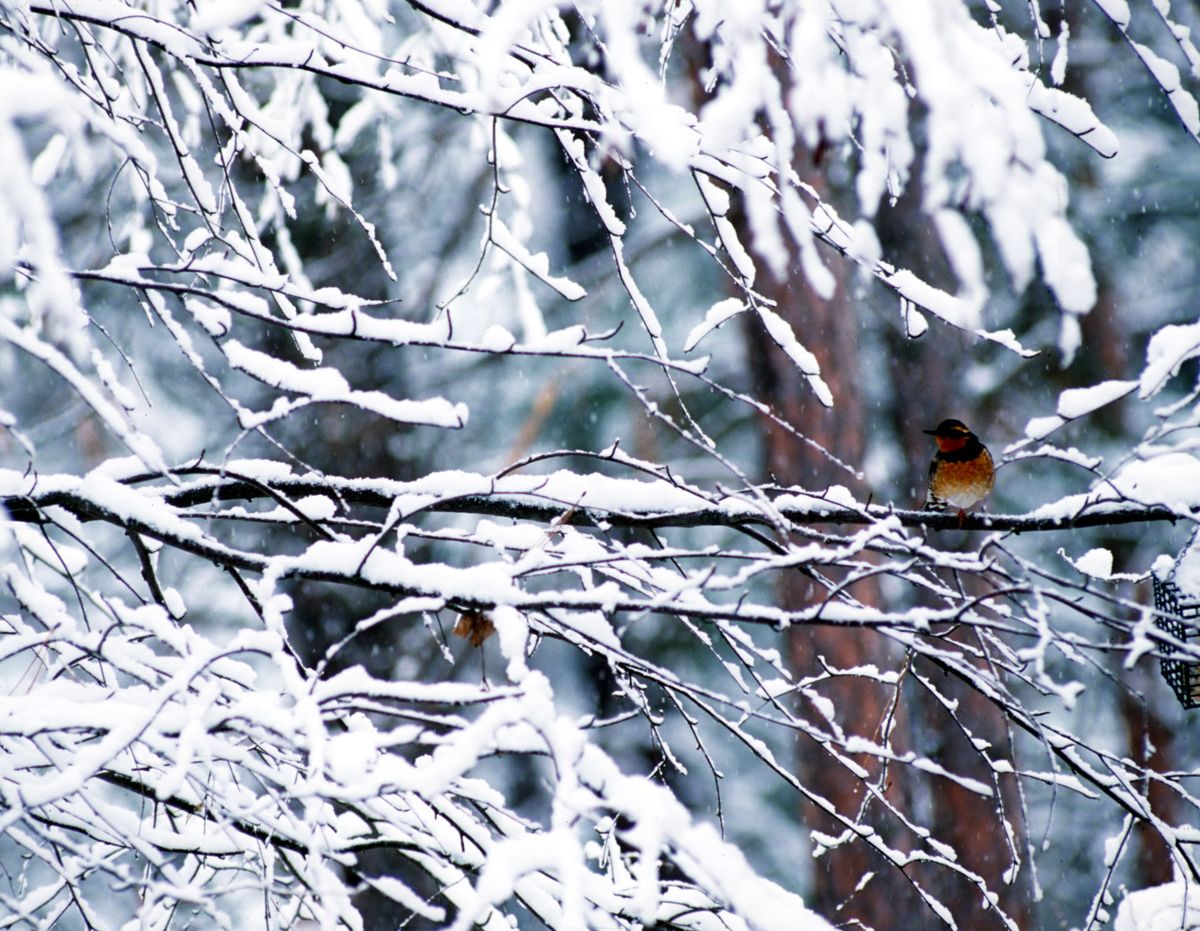Varied thrush’s haunting call pierces the forest in winter

On gray mornings in winter, the haunting two-note trill of one of the Northwest’s most secretive birds pierces the chilly air.
It’s the varied thrush, a cousin of the American robin, but with distinctive blue-gray, black, and orange markings.
And a haunting whistle.
“To me, it’s always been a really eerie sound,” said Joe Meche, a Bellingham birder who often leads guided walks around Whatcom County.
“Before I learned what I was hearing, I wondered ‘What the heck was that?’”
The varied thrush is common in northwestern North America, especially Alaska, British Columbia, Washington and Oregon.
This winter, an abnormally high number of the birds were noticed by bird watchers in the Spokane-Coeur d’Alene region.
Meche said that varied thrushes are extremely common in Whatcom County in winter because of snowfall in the mountains.
As spring approaches, the varied thrushes tend to move up in elevation in the mountains along the receiding snowline.
“If you go hiking in the mountains after the snow is gone, you’ll hear them calling, because that’s where they nest,” Meche said.
Although varied thrushes sing from a high perch, they feed on the ground, where they forage for insects and berries in dense cover and small forest openings. Their orange and blue coloration provides camouflage on a sun-dappled forest floor or under low scrub.